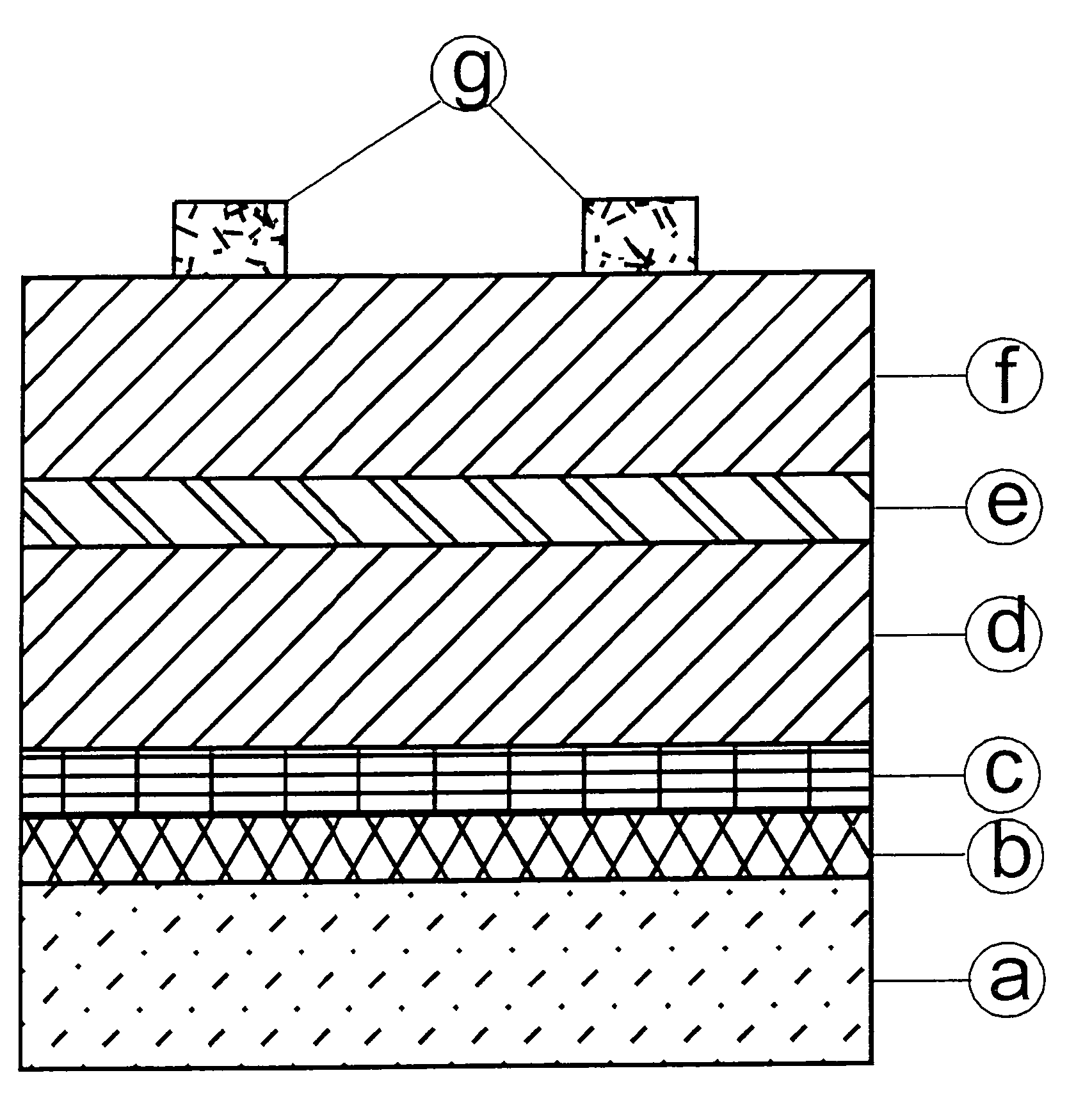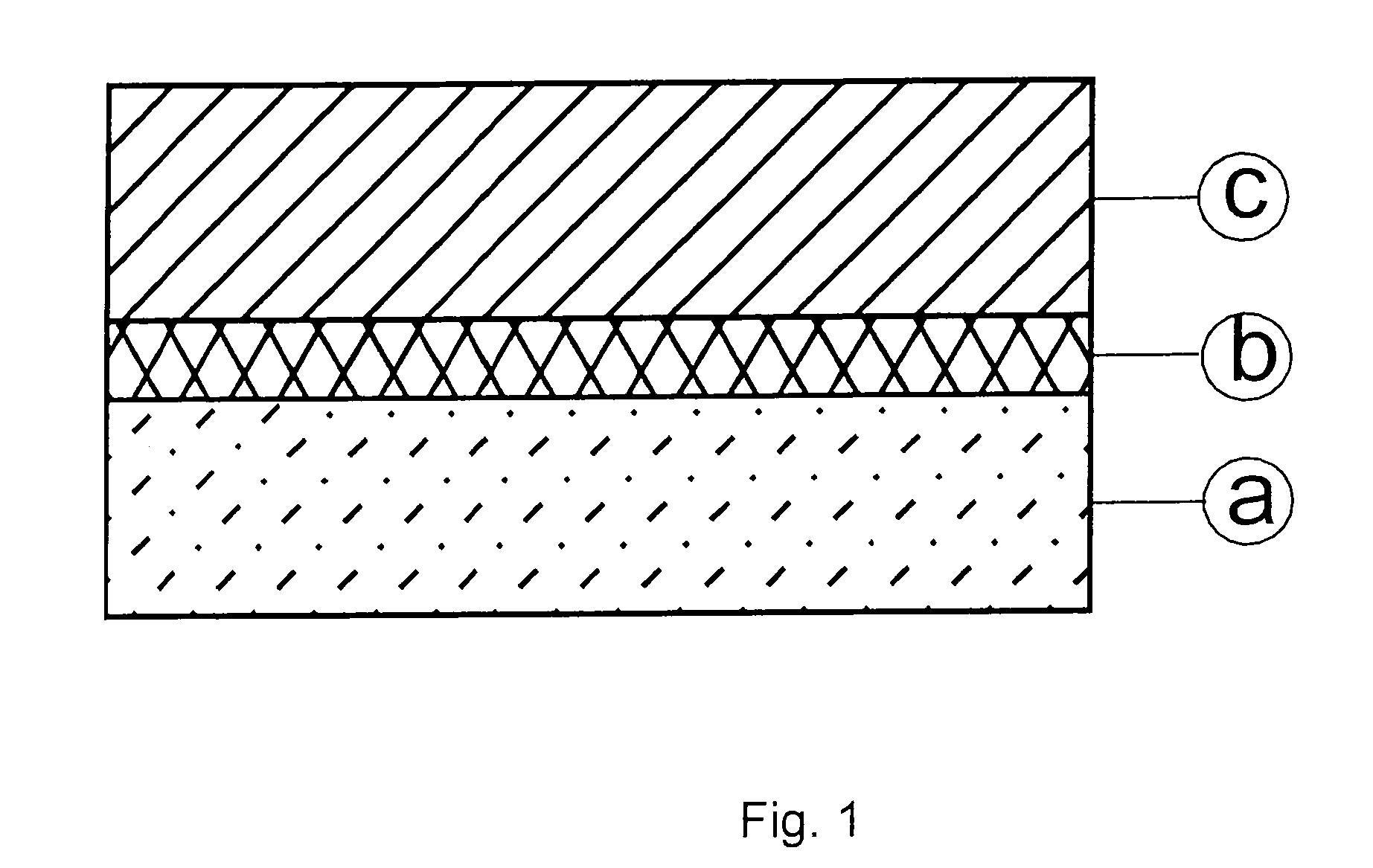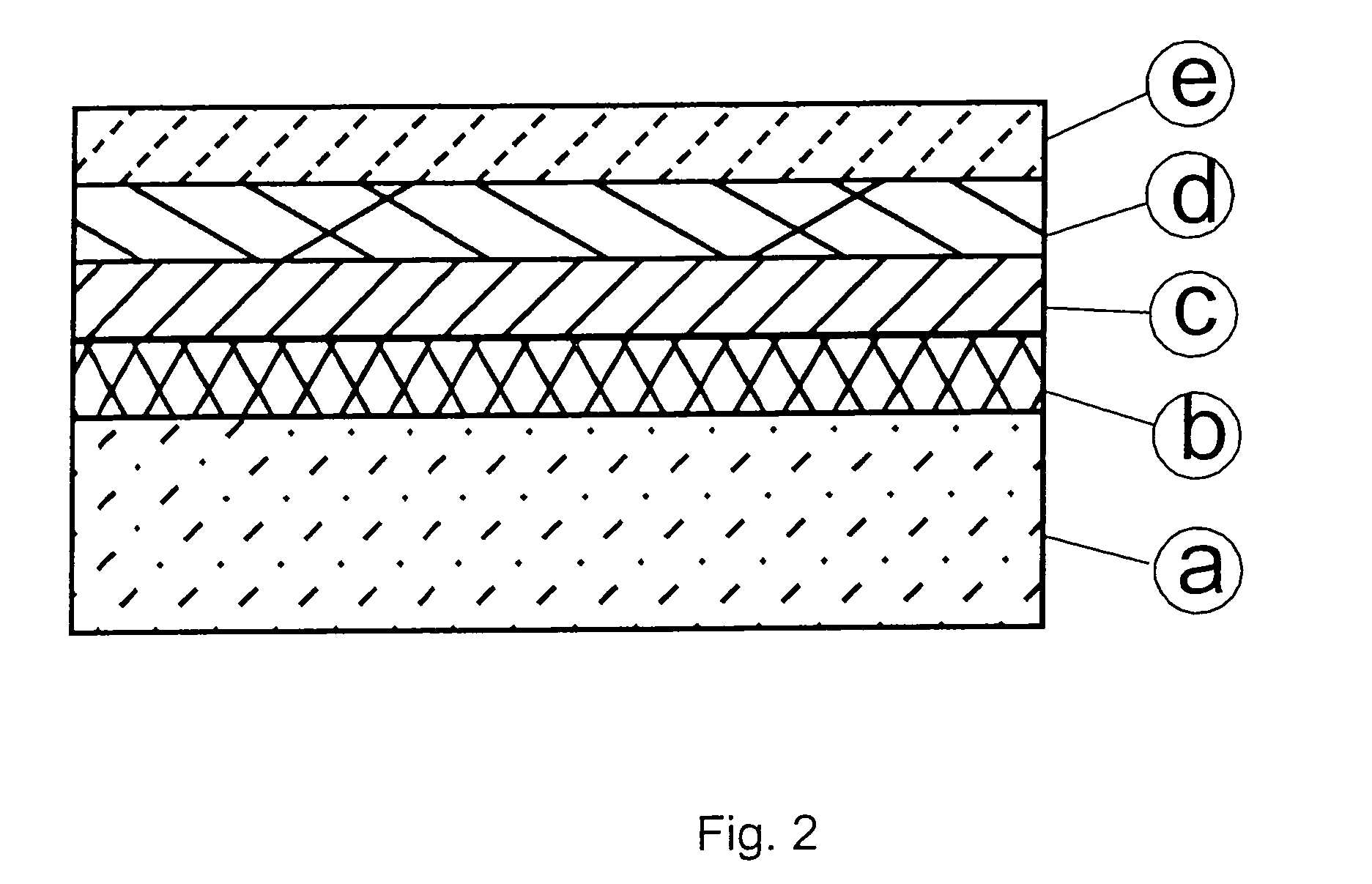Metal Plating Composition and Method for the Deposition of Copper-Zinc-Tin Suitable for Manufacturing Thin Film Solar Cell
a technology of copper-zinc-tin and metal plating composition, which is applied in the direction of metal/alloy conductors, resistors, liquid/solution decomposition chemical coatings, etc., can solve the problems of not revealing the conversion efficiency of solar cells, difficult control of plating process, and limited use, so as to achieve easy manufacturing
- Summary
- Abstract
- Description
- Claims
- Application Information
AI Technical Summary
Benefits of technology
Problems solved by technology
Method used
Image
Examples
example 1
Deposition of a Copper-Zinc-Tin Sandwich Layer
[0167]In a first embodiment of the fourth aspect of the invention, a stack of electroless copper, electrodeposited tin and electrodeposited zinc (from the bottom / back contact to the top of the cell) was formed:
[0168]First, an electroless copper may be deposited using commercially available chemicals, e.g., Printoganth® MV Plus and / or Noviganth® TU (both names being trade marks of Atotech Deutschland). Both products are electroless copper baths based on tartrate as the complexing agent. The solution make-up was performed according to the instruction manual of the baths in a 5 l beaker. The solution was agitated with air and by using a magnetic stirrer. It was heated on a hot plate to the working temperature at slightly above 30° C.
[0169]A molybdenum coated glass substrate was used to be plated clamped by using a copper wire as a holder. The sample was immersed into the electrolyte and electroless plating was initiated by applying a short ...
example 2
Deposition of a Copper-Zinc-Tin Sandwich Layer on an Adhesion-Promoted Glass Substrate
[0174]In a second embodiment of the fourth aspect of the invention, a stack of electrodeposited palladium or palladium-nickel alloy, electrodeposited copper, electrodeposited tin and electrodeposited zinc (from the bottom / back contact to the top of the cell) was formed:
[0175]Thin layers of electrodeposited palladium (Pallacor®: trade mark of Atotech Deutschland) or of palladium-nickel alloy (Palnilux®: trade mark of Atotech Deutschland) were used as an adhesion promotor for the subsequent electrodeposition of tin, zinc and copper. Pallacor® is a neutral electrolyte for the deposition of palladium layers up to 10 μm. Palnilux® is an ammonia containing electrolyte which provides bright Pd—Ni (Pd 80% / Ni 20%) layers. Both baths were operated according to the operation manuals.
[0176]The thickness of the adhesion promotor was in the range of 30 nm. The deposition time was 20 s. Tape test proved that both...
example 3
Sulfurization of the Copper-Zinc-Tin Sandwich Layer
[0178]Thereafter the CuxZnySnx (1.52S or H2Se from the waste gas. A water cooling system protected sensible parts like seals, flanges etc.
[0179]An SiC covered graphite box was installed in the centre of the glass tube. It served as a substrate carrier and was equipped with different caps, which either have a sufficiently large hole to grant the necessary gas exchange or seal of the box interior to keep the necessary partial pressure of the evaporating compounds in this box. The graphite box was connected with a main thermo couple of the temperature control unit. This optimized configuration ensured a homogenous temperature distribution at the substrate surface of less than ±2 K.
[0180]The final vacuum pressure was limited by a rotary vane pump at ≦10−3 mbar. The different gas supply valves allowed the connection of either inert gas like nitrogen (flow rates: 0-3600 l / h) as well as process gases like H2S (Ar / H2S—5 vol.-%). The flow ra...
PUM
 Login to View More
Login to View More Abstract
Description
Claims
Application Information
 Login to View More
Login to View More - R&D
- Intellectual Property
- Life Sciences
- Materials
- Tech Scout
- Unparalleled Data Quality
- Higher Quality Content
- 60% Fewer Hallucinations
Browse by: Latest US Patents, China's latest patents, Technical Efficacy Thesaurus, Application Domain, Technology Topic, Popular Technical Reports.
© 2025 PatSnap. All rights reserved.Legal|Privacy policy|Modern Slavery Act Transparency Statement|Sitemap|About US| Contact US: help@patsnap.com



